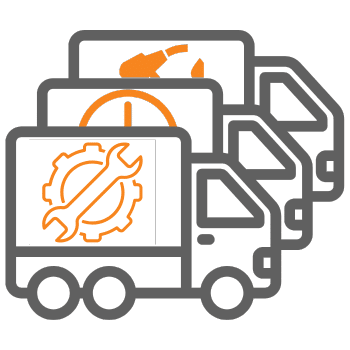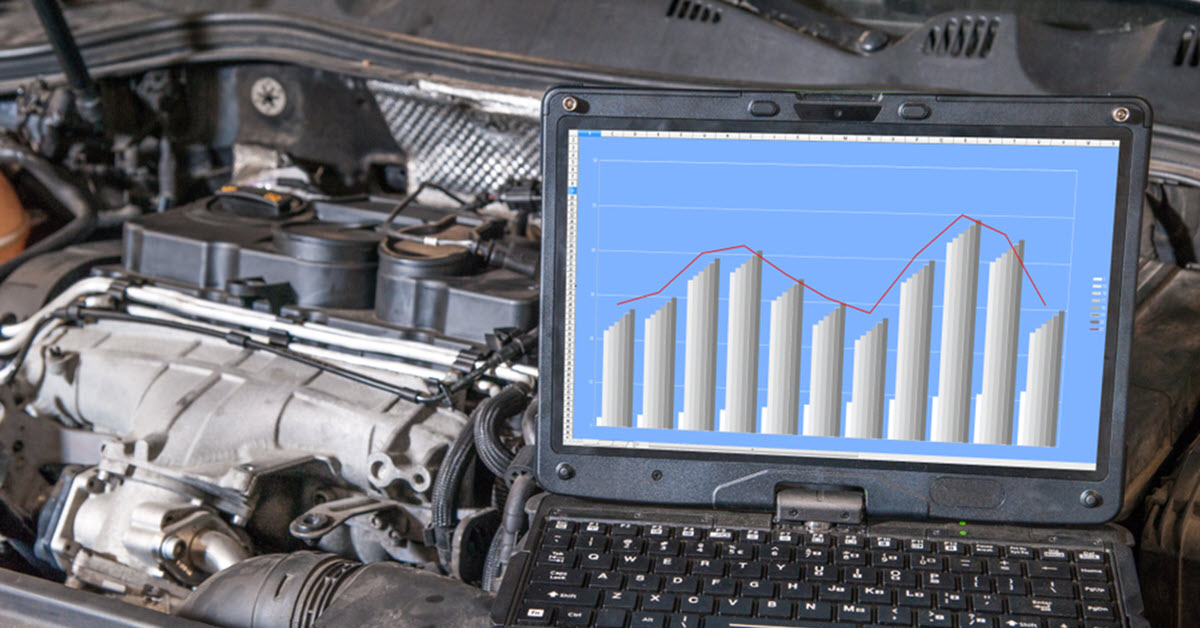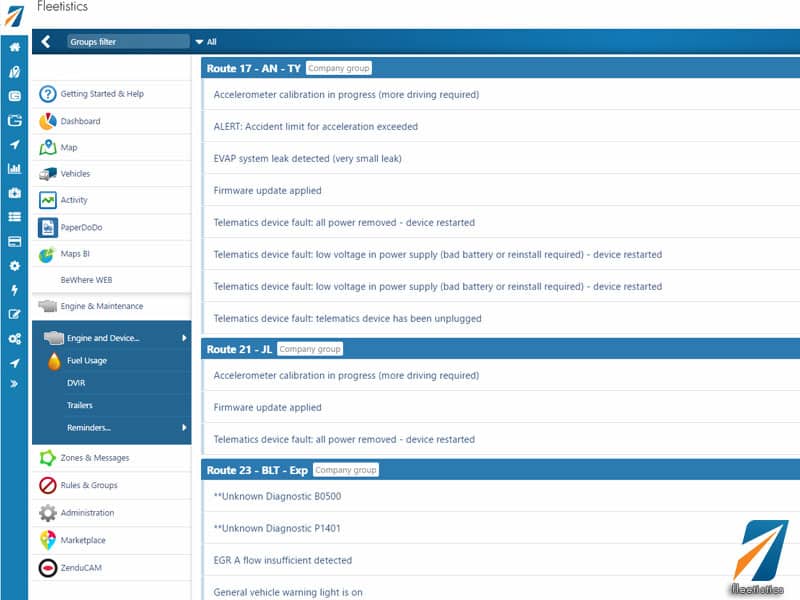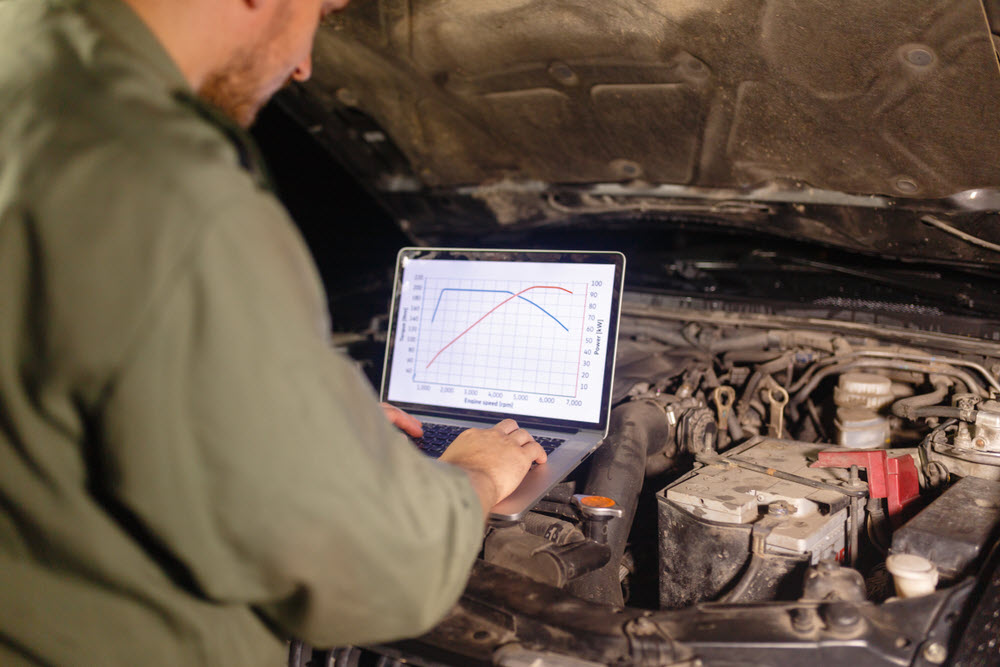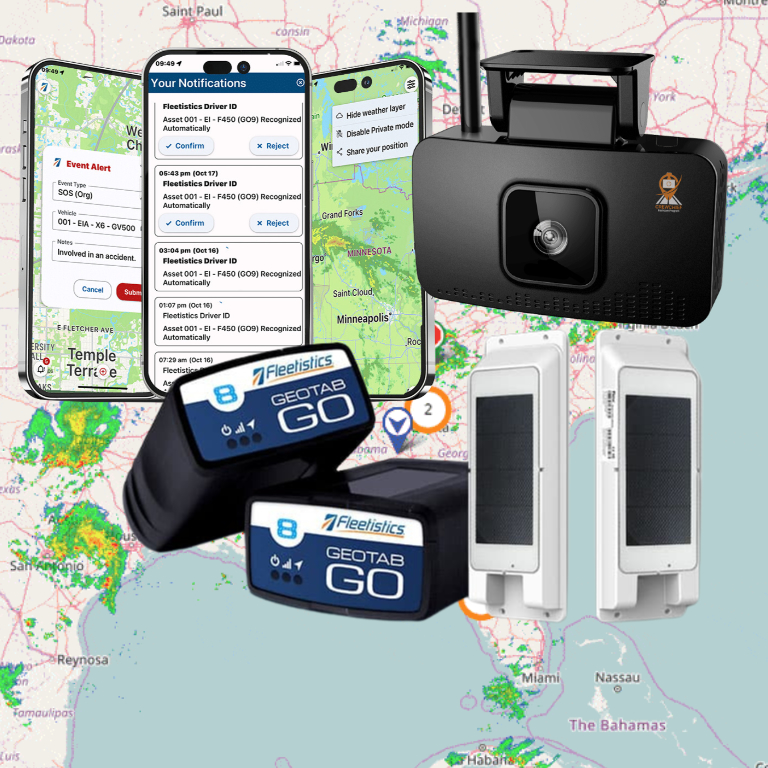Making Sense of Engine Data
Managing a fleet of vehicles isn’t easy, especially in today’s fast-paced world where every second counts. Whether you’re running a small business with a few vehicles or managing a large fleet, one thing is clear: staying on top of interpreting engine data can be a game-changer.
The good news?
Thanks to advancements in telematics and automotive data analytics, understanding and using this data effectively has never been simpler.
What Is Engine Data, and Why Should You Care?
Interpreting engine data might not sound all that exciting, but engine data is packed with valuable info that can make a big difference in how your vehicles perform and vehicle maintenance costs.
Think of it like a health report for your car or truck, with details like fuel usage, engine temperature, RPMs, and even DTC fault codes. When you analyze this data the right way, it’s like opening the door to better fuel efficiency, less unplanned downtime, and major cost savings. Who wouldn’t want that?
The Basics of Automotive Data Analytics
Automotive data analytics is all about taking all those engine stats and turning them into something useful. It’s not just about reading numbers but more about finding patterns and insights that help you optimize performance, avoid costly repairs, and keep your fleet running smoothly. With the right tools, you can turn your data into real results, and results is what interpreting engine data is really all about.
For larger fleets, integrated partner apps may provide a wealth of additional insight and predictive capability. Some even include work order management capabilites as part of the package.
Key Benefits of Interpreting Engine Data
Here’s why interpreting engine data is such a big deal:
• Better Fuel Efficiency:
Nobody wants to spend more on gas than they must. By keeping an eye on fuel usage, you can spot inefficiencies and adjust driving habits or vehicle maintenance to save on fuel costs.
• Predictive Maintenance:
Imagine knowing when a part is about to fail before it causes a breakdown. By analyzing engine data, you can spot potential issues early, schedule repairs proactively, and avoid unexpected downtime. Routes get run. Deliveries get made. Customes stay happy.
• Improved Safety:
Your fleet’s safety is non-negotiable. Tracking engine performance helps ensure that everything under the hood is working like it should, reducing the risk of accidents caused by mechanical failures.
Combining Engine Data with GPS Tracking
Alright, now that you know why engine data matters, let’s talk about how to get it.
Modern telematics devices are your best friend. For an even fuller picture, your telematics device provides GPS tracking data so, not only do they tell you where your vehicles are and how they are being driven; These nifty tools plug right into your vehicle OBD or J-Bus port, gather all sorts of performance metrics, and send them to you in real time.
Picking the Right Telematics Device
Not all telematics devices are created equal. When choosing one, look for these features:
• Compatibility:
Make sure it works with the different vehicle types in your fleet.
• Accuracy:
Reliable data is key.
• Ease of Installation:
You don’t want to spend hours figuring out how to set it up.
Interpreting Engine Data You’ve Gathered
Once you’ve got the data, the next step is figuring out what it all means. Don’t worry—you don’t need a Ph.D. in data science to do this. Modern data visualization tools make it super easy to understand even the most complex datasets. Charts and graphs turn mountains of numbers into insights you can act on.
Using Data Visualization Tools
These tools are essential for spotting trends and patterns. They help you answer questions like, “Why is this truck using so much fuel?” or “Is it time for maintenance on vehicle #12?” Having this info at your fingertips can help you make smart, data-driven decisions without breaking a sweat.
Real-Life Example: A Delivery Company Success Story
Let’s take a closer look at how engine data can make a real impact. Imagine a delivery company running a fleet of vans. By analyzing engine data, they notice a couple of their vehicles are guzzling fuel more than the others. A deeper look shows that one driver has a habit of idling for long periods, while another van has a mechanical issue affecting its fuel efficiency. By addressing these problems, the company saves thousands of dollars a year and boosts overall efficiency. Not bad, right?
Putting Engine Data to Work
The ultimate goal is to use engine data insights to take your fleet to the next level. Here’s how you can do it:
1. Develop Actionable Strategies
Take the insights from your data and turn them into action. For example, if certain vehicles need maintenance more often, tweak your maintenance schedule. If drivers have habits that waste fuel, offer them some training.
2. Keep Monitoring and Improving
Engine data analysis isn’t a one-and-done deal. Keep tracking the numbers and updating your strategies. Continuous improvement is the name of the game, and regular monitoring can help you stay ahead of problems.
Why Telematics Technology Is Worth It
Investing in the right telematics tools and services is worth every penny. Not only does it give you access to a treasure trove of information, but it also helps you make smarter decisions that benefit your business. And remember, professional installation and ongoing support are key to getting the most out of your tech.
Conclusion
So, what’s the bottom line? Engine data might not sound glamorous, but it’s a powerful tool for improving your fleet’s performance, cutting costs, and keeping your vehicles in tip-top shape. By embracing telematics technology and automotive data analytics, you’re setting yourself up for success in an increasingly competitive world.
The tools are out there, ready to help you harness the power of engine data. With a little effort, you’ll be able to drive your business forward and stay one step ahead. So why wait? Dive into your engine data and see what it can do for you!
Read more about how to introduce GPS tracking to your drivers.
